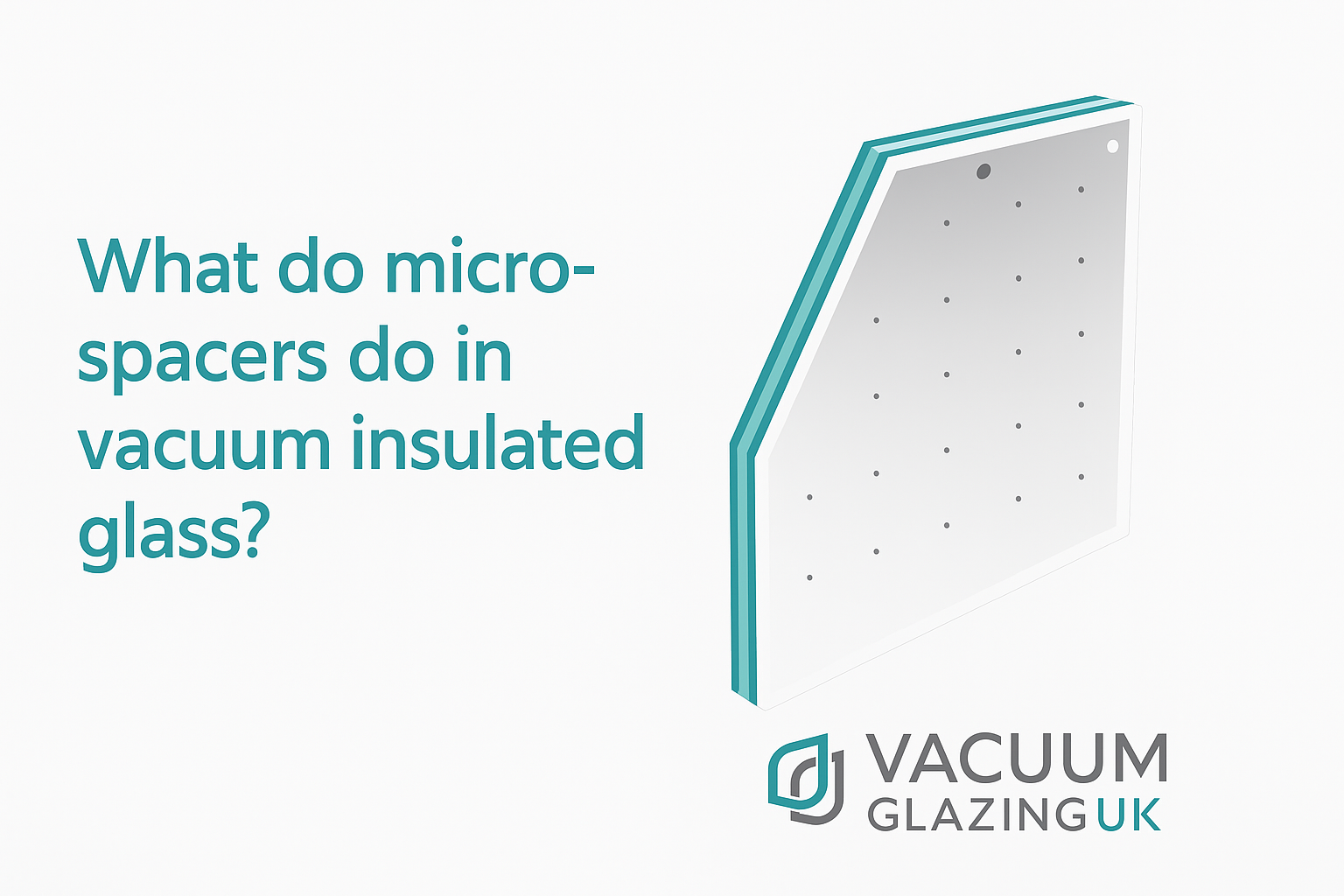
What Are Those Tiny Dots in Vacuum Glass?
The Truth About Titanium Micro-Spacers If you’ve ever looked closely at a vacuum-insulated glass (VIG) unit, you might have spotted […]
The Truth About Titanium Micro-Spacers
If you’ve ever looked closely at a vacuum-insulated glass (VIG) unit, you might have spotted tiny dots inside the glass. These aren’t a flaw; they’re micro-spacers, and they’re a key part of how vacuum glass works.
What do micro-spacers do in vacuum glass?
Vacuum-insulated glass is made of two panes with a vacuum-sealed gap between them. That vacuum blocks heat from passing through, which is why vacuum glazing is so thermally efficient.
But here’s the catch: the air pressure outside is huge compared to the pressure in the vacuum gap. Without something holding the panes apart, they’d be forced inward and collapse. That’s where micro-spacers come in.
These tiny dots act like tiny invisible props. They hold the two panes apart so the vacuum gap stays intact.
What would happen if there weren’t any micro-spacers?
If vacuum glazing didn’t have micro-spacers, the two panes would simply get pushed together by the weight of atmospheric pressure. Once that gap is gone, the vacuum is lost, and with it, all the insulation benefits.
No vacuum means no thermal performance.
Micro-spacers are the quiet heroes that make vacuum glass work.
But do the dots ruin the view?
Not with LandVac.
Some types of vacuum glass use large or oddly shaped spacers, or space them unevenly, which can be distracting. LandVac does it differently:
- The micro-spacers are just 0.75mm wide
- They’re round and evenly spaced on a grid (55mm–70mm apart, depending on the size of the unit). This is the lowest number of micro-spacers of any vacuum glazing, with approximately eight times fewer than our leading competitor’s 20mm grid layout.
- On a whole square metre of glass, they only take up 0.012% of the surface
- From 1 metre away, you can’t even see them
Most people never notice them at all, especially with our UltraClear glass.
Why titanium?
Unlike other VIG products that use ceramic spacers (which can crack and leave white powder inside the unit), LandVac uses titanium:
- It’s ultra-strong and won’t break
- It doesn’t conduct heat easily, so it won’t create cold spots
- The finish is a light grey matte, so you don’t get distracting reflections
The result?
Strong, stable glass that’s insulated, durable and crystal-clear.
No distortion. No double reflections. And no clunky spacers getting in the way of your view.
That’s the invisible power of LandVac.
Want performance without compromise?
Request a quote today and discover the difference LandVac can make.